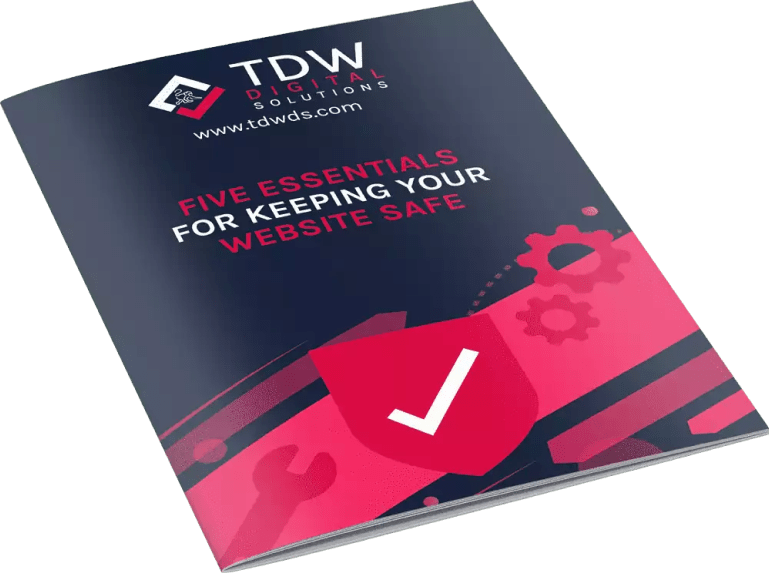Have you ever been to a store with a layout so cramped that you could barely look at the products? Or found it difficult to find the items you wanted because there was no clear organisation? You may have made a purchase, but you probably didn’t buy as much as you would have if the store had been streamlined and convenient.
The same is true for eCommerce sites. In fact, many consumers are even less tolerant of poorly designed online stores. They may be willing to wander around a confusing store, but they can click away from a bad website in an instant. Clearly, a good user experience (UX) is crucial to your eCommerce site’s success. Here’s how UX design can help drive sales — and how to optimise your UX design for best results.
It helps visitors find what they need.
Navigation is a key element of your UX. Without good navigation, you can expect a high bounce rate and low conversion rate. Consumers simply don’t have time to figure out how to use your site, so if it isn’t easy to use, they’ll abandon you and choose your competitor.
Effective navigation is two-fold: users should be able to find the pages they want, and they should be able to easily identify what they need on each page. Your site’s UX design needs to be logical and intuitive. Often, this means meeting users’ expectations by placing items in common locations, e.g. your menu at the top and contact information in the footer.
Your UX also entails the overall layout of page elements. Expect that most people won’t scroll unless they have to. They judge a page’s content by what they first see when they land on it. So, if you hide key information “below the fold,” you’ll probably see a lower conversion rate. Good UX design works with people’s natural browsing behaviour, not against it.
It anticipates users’ needs.
Poor UX design assumes that users will go out of their way to find what they want. It crowds the site with irrelevant or redundant information rather than answering the customer’s problem. By contrast, good UX design places the user first. It asks, “What does the visitor already know, and what they do want to see?”
For example, it used to be trendy for websites to include a large “Welcome” message at the top of the homepage. This was a space where the brand could talk about itself. Then, the site was organised according to the business’s structure, not how customers would expect to see content.
It’s far better to organise your entire UX design around the user’s desires and tendencies. That means placing the key call-to-action and value proposition at the top of the page and supporting them with vivid design elements. It also means showing users relevant information as they need it, e.g.
It’s easy to understand.
UX isn’t just the visual elements of your site. A big part of the user experience is the copy people see as they navigate your site. This is especially important for eCommerce because people aren’t there to read. They’re there to find products that solve their problems and meet their desires.
Clear, concise copy is essential to high conversions. If you look at the world’s biggest eCommerce sites such as Amazon and Target, you don’t see menus or CTA buttons with strange or ambiguous wording. The copy expresses a benefit that solves the customer’s problem, and it does so in simple language. Each page element has limited text, so that it’s easy to skim the page and figure out what’s what.
The written element of UX design is also crucial to your sales funnel. Throughout the buying journey, you want to assure your customer that they’re getting what they want and paying the right price for it. Checkout processes that don’t clearly identify each step can make people suspicious or distracted. Reduce the number of steps as much as possible, and label each one so that customers understand what they’re doing.
It’s accessible to everyone, everywhere.
For a while, it was fashionable to have highly decorative websites with lots of bells and whistles. From animated splash panels to shifting page elements, these sites were designed to be an adventure.
Nothing could be worse for eCommerce. Users do not want to wade through Flash animations and fussy page elements to get what they want. Moreover, these designs don’t look good on mobile and they cannot be easily navigated by people with certain disabilities.
To maximise your UX for all members of your audience, simple and sleek is the best way to go. Ensure that your site uses responsive design so that it looks good on mobile. Then, implement web accessibility measures to help people navigate your site. This means clearly identifying links and navigation elements, providing alternative text for images, allowing users to tab through the page, and much more.
An accessible, responsive site is a user-friendly site. And in eCommerce, that’s crucial to higher conversion rates.
Wrapping Up
Good UX design gives your eCommerce site’s visitors a cohesive, convenient experience. It taps into their needs and drives them toward purchase rather than making them jump through hoops. In general, simpler is better. It appeals to more people and helps them trust your brand. Anything confusing or frustrating is sure to drive them away — potentially forever. Play it safe and make a user-centric UX part of your eCommerce website design.
Whether it’s brand development, website design, or print management, we’re the people who can get the job done – and get your business communications working harder for you.
For expert assistance in user-friendly eCommerce sites, reach out to TDW Digital Solutions. We’re happy to help you translate your conversion goals into compelling, beautiful UX design.






